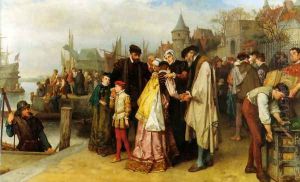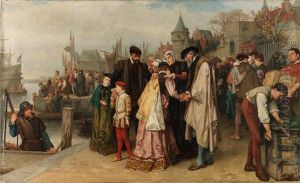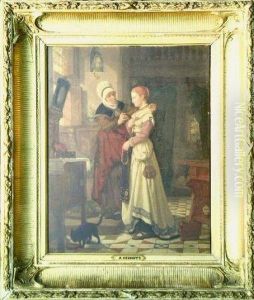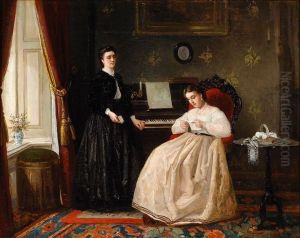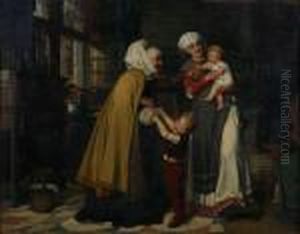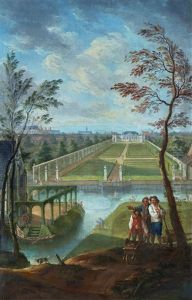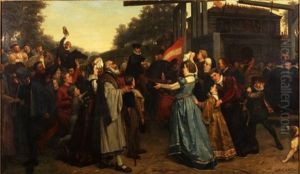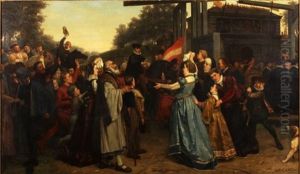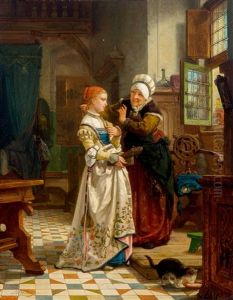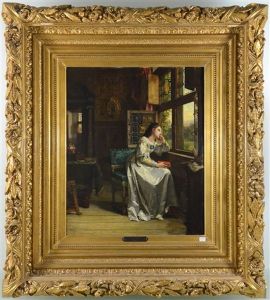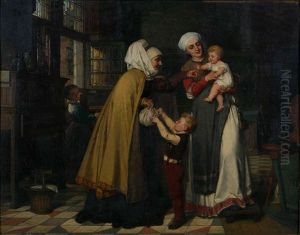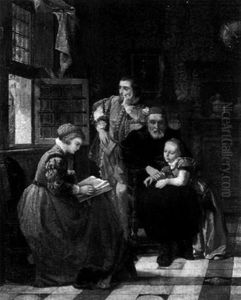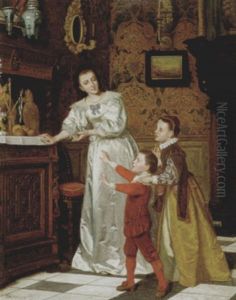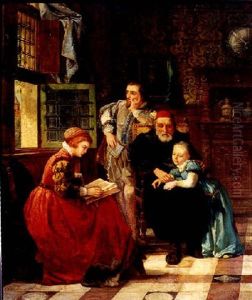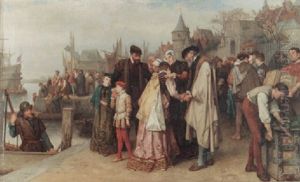Jan Antoon Neuhuys Paintings
Jan Antoon Neuhuys was a Dutch painter known for his contributions to the Laren School and his role in the early stages of the Hague School. Born on June 8, 1832, in Zaltbommel, Netherlands, Neuhuys emerged from a family with an artistic lineage. His younger brother, Jozef Israëls Neuhuys, would also pursue a career in art, indicating a familial environment that nurtured creativity and artistic expression. Jan Antoon's early life was steeped in an atmosphere that valued the arts, providing a fertile ground for his development as a painter.
Neuhuys's artistic journey began under the guidance of his father, Johannes Neuhuys, who was an amateur painter himself. This initial instruction set the stage for Jan Antoon's formal education in the arts, which was furthered at the Royal Academy of Art in Amsterdam. Here, he was exposed to the teachings of influential artists and educators of the time, which helped shape his artistic direction and approach. Neuhuys's style evolved to reflect the qualities associated with the Hague School, characterized by its focus on realism, muted color palettes, and the depiction of everyday life in rural Netherlands.
Throughout his career, Neuhuys became particularly known for his interior scenes and his ability to capture the play of light and shadow within domestic settings. His work often depicted serene moments of domestic life, imbued with a sense of tranquility and a deep appreciation for the mundane aspects of daily existence. This thematic focus mirrored the broader interests of the Hague School artists, who sought to convey the beauty and dignity of simple, rural life through their art.
Jan Antoon Neuhuys's contributions to Dutch art were not limited to his paintings alone. He played a significant role in the Laren School, a group of artists who settled in the village of Laren, attracted by its picturesque landscapes and the opportunity to live and work in close proximity to nature. This environment further influenced Neuhuys's work, allowing him to explore landscape painting alongside his interior scenes.
Neuhuys's work received recognition during his lifetime, and he was actively involved in the artistic community, participating in exhibitions and contributing to the development of the art scene in the Netherlands. Despite his achievements, Neuhuys has not been as widely celebrated as some of his contemporaries. Nevertheless, his paintings remain valuable examples of the artistic movements he was part of, offering insights into the domestic and rural life of 19th-century Netherlands.
Jan Antoon Neuhuys passed away on February 16, 1891, leaving behind a body of work that continues to be appreciated by art historians and collectors. His legacy is preserved in the collections of Dutch museums and in the annals of 19th-century European art history, where he is remembered as a skilled painter who contributed to the rich tapestry of Dutch realism and the early developments of the Hague School.
